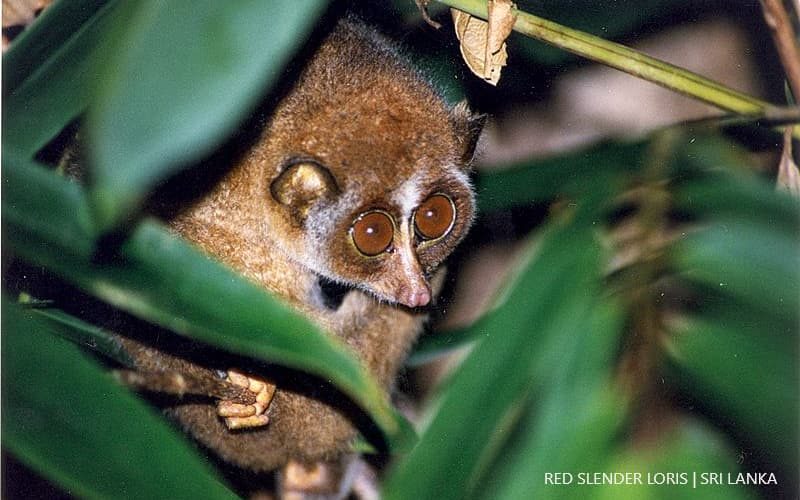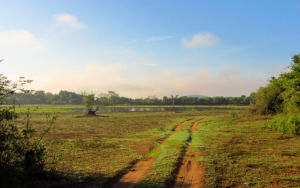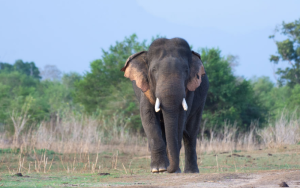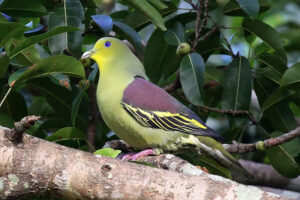About Red Slender Loris
The red slender loris (Loris tardigradus) is a small, nocturnal strepsirrhine monkey that is unique to Sri Lanka’s jungles. It is a member of the genus Loris. That makes it the sixth most important focal species in the study, as well as the twenty-second most important of the hundred EDGE mammal species worldwide, which are regarded as the most evolutionary different and globally endangered. L. t. tardigradus and L. t. nycticeboides are the two subspecies that have been recognized.
Description of Red Slender Loris
In addition to having large forward-facing eyes for precise depth perception, this small slender primate is distinguished by the absence of its tail and large prominent ears that are thin, rounded, and hairless at their edges. It is also distinguished by the presence of a well-developed index finger on its right index finger. The fur color is a reddish-brown color on the back, with a few silver hairs scattered throughout, and a whitish-grey color with a sprinkling of silver hairs on the underside. Its body length ranges between 7 and 10 in (180 and 250 mm), and its usual weight is between 3 and 13 oz (85 and 369 g). Each foot of this loris is gripped in four different ways. The big toe works in opposition to the other four toes in order to maintain a pincer-like grip on branches and food. It features a dark facial mask with a central pale stripe, which is similar to that of the slow lorises.
Larvae tardigradus tardigradus is brown in the back and creamy yellow below, whereas L. tardigradus nycticeboides is dark brown in the dorsal region and very light brown in the upper regions of the body.
This small slender primate is distinguished by the absence of its tail and large prominent ears that are thin, rounded, and hairless at their edges. Its body length ranges between 7 and 10 in (180 and 250 mm) and its usual weight is between 3 and 13 oz (85 and 369 g). Fur color is a reddish-brown color on the back, with a few silver hairs scattered throughout, and a whitish-grey color with a sprinkling of silver hairs on the underside. Larvae tardigradus tardigradus is brown in the back and creamy yellow below, whereas L. tardigradus nycticeboides is dark brown in the dorsal region and very light brown in the upper regions of the body.

Behavior
The red slender loris favors lowland rainforests (up to 700 m in altitude), tropical rainforests, and inter-monsoon forests of the southwestern wet zone of Sri Lanka. Masmullah Proposed Forest Reserve harbors one of the few remaining red slender loris populations and is considered a biodiversity hotspot. The most common plant species eaten was Humboldtia laurifolia, occurring at 676 trees/ha, with an overall density of 1077 trees/ha. Humboldtia laurifolia is vulnerable and has a mutualistic relationship with ants, providing abundant food for lorises. Reports from the 1960s suggest that it once also occurred in the coastal zone, however, it is now thought to be extinct there.
The red slender loris differs from its close relative the gray slender loris in its frequent use of rapid arboreal locomotion. It forms small social groups, containing adults of both sexes as well as young animals. This species is among the most social of the nocturnal primates. During daylight hours the animals sleep in groups in branch tangles or curled up on a branch with their heads between their legs. The groups also undertake mutual grooming and play wrestling. The adults typically hunt separately during the night. They are primarily insectivorous but also eat bird eggs, berries, leaves, buds, and occasionally invertebrates as well as geckos and lizards. They forage, and while doing so, ants may stick to the back of their hands. As this occurs, the red slender loris is able to consume these ants. To maximize protein and nutrient uptake they consume every part of their prey, including the scales and bones. They make nests out of leaves or find hollows of trees or a similar secure place to live in.
Reproduction
Females are in a position of dominance. The female reaches sexual maturity at the age of ten months and is receptive to the male on two separate occasions each year. Individuals in captivity will not reproduce if there is no suitable branch available for them to mate on since this species mates while hanging upside down from branches. It takes 166–169 days for a female to become pregnant, following which she will give birth to 1–2 young who will nurse from her for 6–7 months. According to current estimates, this species has a wildlife expectancy of approximately 15–18 years.

Threats
The slender loris is a threatened species in the United States. The degradation of natural habitats is a big problem. In addition to being commonly trapped and killed for use in alleged cures for eye disorders, it is also preyed upon by snakes, dogs, and several species of fish. Electric shock from live electrical wires, car accidents, and capture for the pet trade are all potential dangers.
Conservation
When the Evolutionarily Distinct and Globally Endangered (EDGE) project recognized the red slender loris as one of the top-10 “focal species” in 2007, it was considered a breakthrough.
One early achievement has been the rediscovery of the Horton Plains slender loris, which was previously thought to be extinct (Loris tardigradus nycticeboides). Despite the fact that the sub-species were first identified in 1937, there have only been four documented encounters in the last 72 years, and for more than 60 years, the sub-species were considered to be extinct until 2002. The sub-species was rediscovered in Horton Plains National Park in 2002 by a team led by Anna Nekaris, who had been searching for it for several years. Because of the capture by a team working under the EDGE program of the Zoological Society of London in late 2009, the sub-species known as the Horton Plains have undergone the first extensive physical examination and the first images of the sub-species ever taken. In light of the limited amount of information now accessible, it is possible that there are just approximately 100 animals left in existence, placing them in the top five most endangered primates on the planet.
Conclusion
In conclusion, the Red Slender Loris is a unique and rare primate species found in Sri Lanka that holds significant ecological and cultural value. With its distinct physical features and nocturnal behavior, the Red Slender Loris is a fascinating animal to observe and study.
However, the population of these primates is threatened by habitat loss, human encroachment, and hunting. It is crucial to implement conservation efforts to protect these endangered primates and their habitats, such as creating protected areas, promoting responsible tourism, and implementing sustainable development practices.
As responsible travelers, we can play a critical role in conserving the Red Slender Loris and its habitat by supporting sustainable tourism initiatives that prioritize the protection of these primates and their natural environment. By doing so, we can ensure that future generations can continue to appreciate the beauty and significance of the Red Slender Loris in Sri Lanka.











